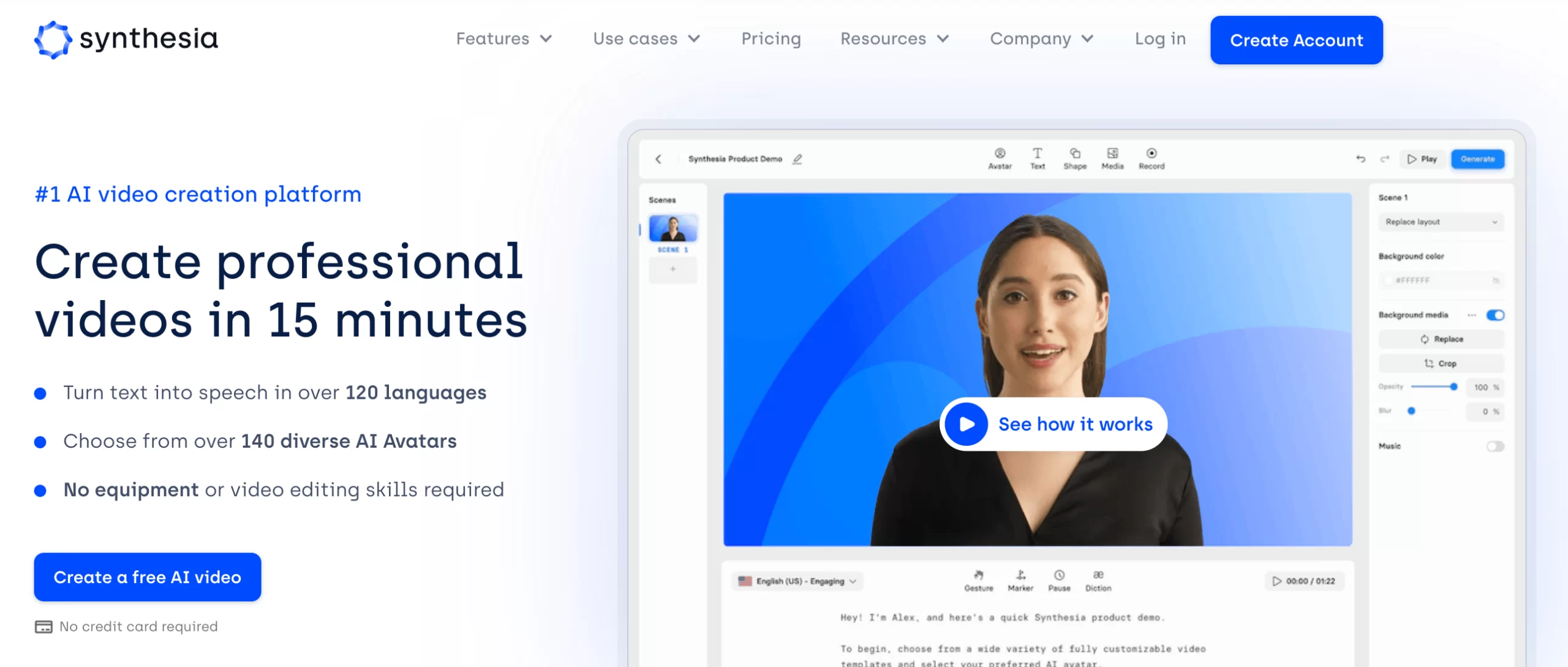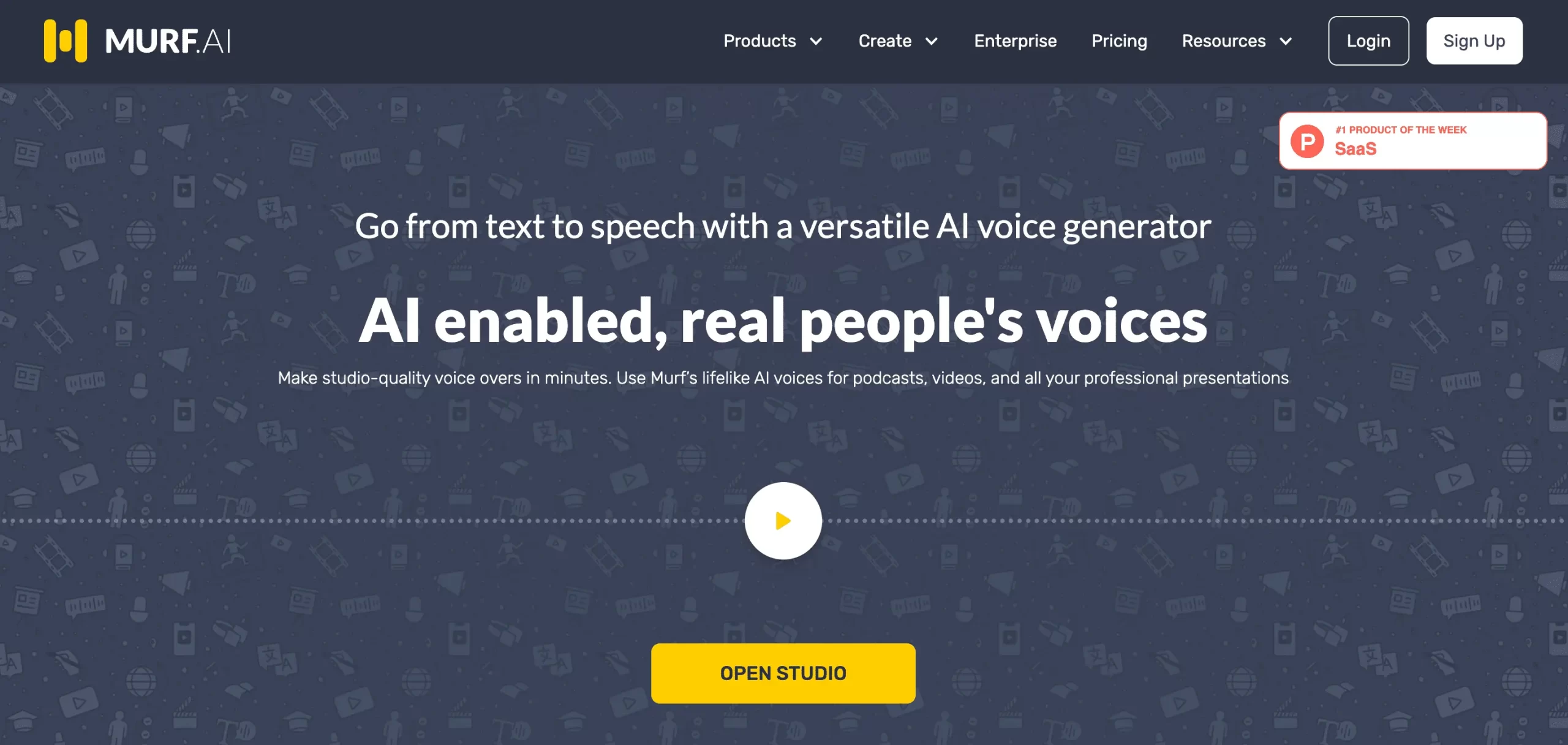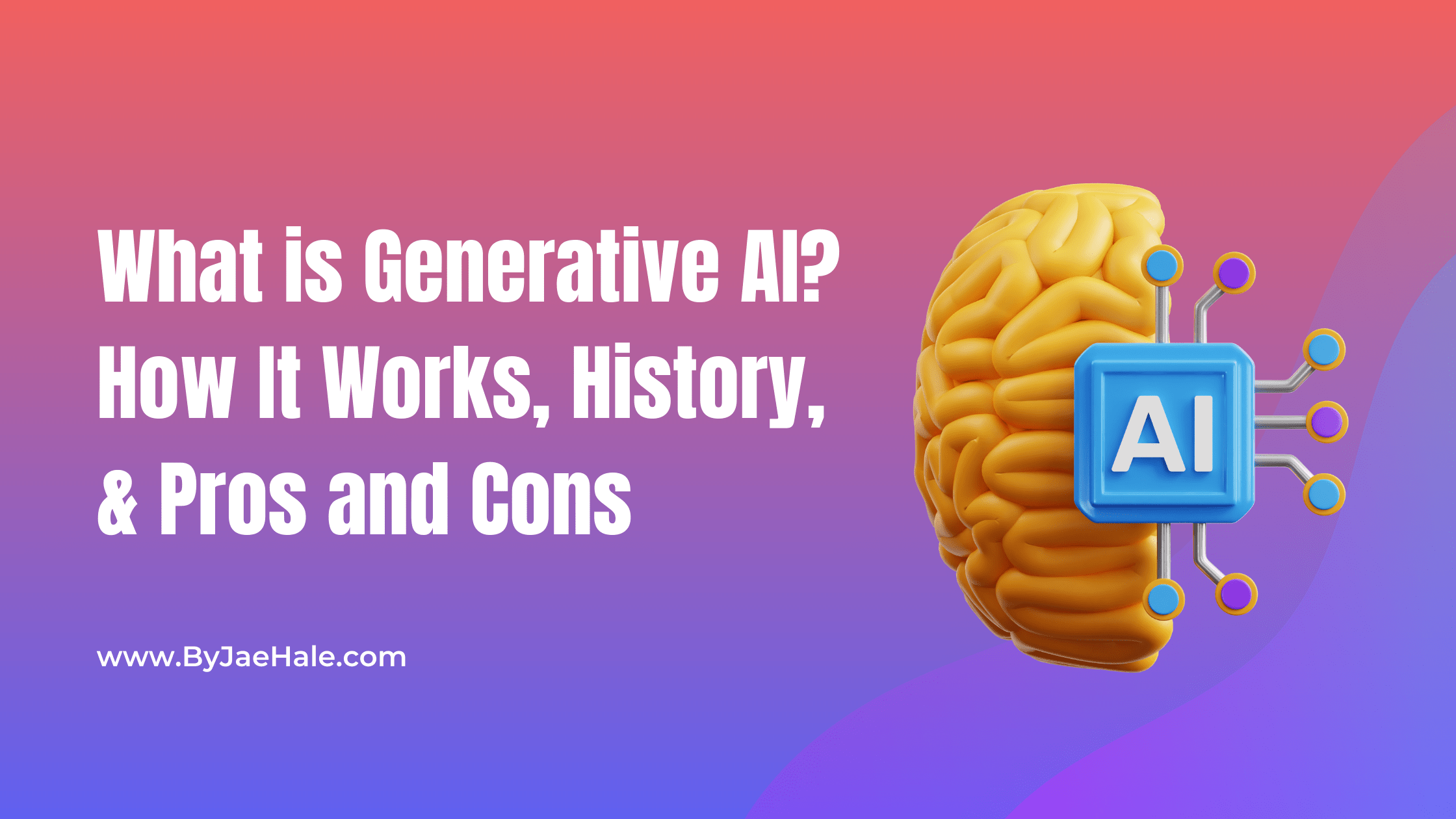So you just came across the term ‘Generative AI’. It sounds like something pulled straight out of a high-tech, futuristic novel, doesn’t it?
But guess what? This AI technology is not just science fiction. It’s working behind the scenes, subtly and significantly changing our world right now.
So, what’s the deal with Generative AI? How does it function? And more importantly, how is it reshaping the way we deal with language models and the digital realm? We’re about to dive right into all of these burning questions.
So grab your favorite beverage, sit back, and let’s unravel the intriguing world of Generative AI together.
What is generative AI & how does it work?
So, you’re curious about generative AI and wondering how it all works? Let me break it down for you.
Understanding the Basics of Generative AI
Generative AI is about using machine learning algorithms to create new content or data that looks a lot like existing examples. The secret ingredient? Large language models that are great at understanding context, predicting outcomes, and coming up with human-like responses.

But how do they do it? By training on tons of data, these models pick up patterns, structures, and relationships, which lets them generate original and coherent content. Intrigued? Let’s dive into some key aspects of generative AI.
Key Mechanisms: GANs, VAEs, and More
When we peel back the layers of Generative AI systems, we come across some pretty hefty AI terms – Generative Adversarial Networks, Variational Autoencoders, and more. Sounds like a robot’s secret language, doesn’t it?
But I promise, it’s not as alien as it seems.
What is a GAN and How Does it Work?
Think of GANs (Generative Adversarial Networks) as an ongoing contest between a clever artist and an astute critic. The artist (or generator) keeps producing artwork, while the critic (or discriminator) continuously evaluates them. The end result is an AI model that’s superb at generating realistic outputs.
The Role of VAEs in A Generative AI Model
As for VAEs (Variational Autoencoders), imagine them as a process of simplification and reconstruction. They take a complex input, condense it, and then attempt to reconstruct the original. The goal here is to produce an output closely resembling the initial input.
Unraveling these mechanisms, Generative AI starts to feel a bit less like rocket science and more like an exciting mystery we’re solving together, don’t you think?
Generative AI history
Wrapping our heads around Generative AI mechanics is key, but there’s something special about looking back at how it all started. Just like any legendary invention, Generative AI has a rich tale full of innovation and evolution.

Let’s take a stroll down memory lane, uncovering its humble beginnings, the big “aha” moments, and tipping our hats to the geniuses that brought this amazing tech to life. Ready to time travel?
From Early AI to Generative Models
Think back to the dawn of AI. Back then, it was pretty straightforward, a lot like taking your first steps into an unknown territory. But just like any grand adventure, things didn’t stay simple for long. Progress happened, things got interesting, and before we knew it, we were on to more advanced stuff.
The arrival of Generative AI models was a major game-changer. These models weren’t just absorbing and processing info—they started creating, bringing new and original content to the table. This was a major turning point, really expanding the possibilities of what AI could do.
So, let’s continue exploring, witnessing how this tech has grown up and reshaped our digital lives. Excited to zoom in on this amazing evolution? I know I am!
Significant Milestones in Generative AI History
As we navigate the path of Generative AI’s growth, there are a couple of standout milestones worth highlighting. These are the significant turning points that shaped the course of Generative AI.

Let’s take a peek at the big three:
1. Natural Language Processing (NLP):
This was a breakthrough moment in our AI journey. With NLP, AI suddenly had the ability to understand and engage with us in our own language, making it a more intuitive and user-friendly technology. It was like our AI companions went from just nodding and gesturing to having full-blown conversations with us.
2. Foundation Models:
Foundation models were another major plot twist. These models took AI a notch higher, enabling it to generate new, human-like text. This was a game-changer for fields like chatbots and customer service, where AI began interacting with humans more naturally and effectively.
3. Recurrent Neural Networks (RNNs):
RNNs introduced the concept of ‘memory’ to AI. Just like our brains remember past experiences, these networks could remember previous inputs, making them especially good for tasks where context is important, like speech recognition or text generation.
Each of these milestones has helped push the envelope for what Generative AI can achieve, transforming our AI from a silent observer to an active participant in our digital world.
What are some examples of generative AI tools?
Generative AI tools cover a broad spectrum, from crafting realistic human portraits to penning catchy content. They’re as diverse as they are versatile.
Piqued your interest? Let’s dive in.
ChatGPT

ChatGPT is the friendly AI conversationalist you’ve always wished for. Powered by a foundation model, it’s equipped to generate human-like text responses in real time. Whether you’re drafting an email or just looking for someone to chat with, ChatGPT is your go-to AI buddy. It’s continually learning and adapting, just like we do. Pretty cool, right?
Synthesia.io

Ever wished you could generate realistic video content with just a script? Well, Synthesia.io has got your back. Leveraging deep generative models, this tool transforms your text into professional-looking videos. Imagine the time and resources you can save on filming and production! It’s like having a Hollywood studio right in your browser.
Jasper

Jasper is another excellent example of generative AI in action. This language model not only understands your queries but can also generate helpful, contextually accurate responses. From answering questions to helping with research, Jasper is like your personal AI assistant. Talk about smart, eh?
Murf.ai

Murf.ai takes voiceovers to a whole new level. Using advanced AI algorithms, it generates lifelike voices from text. Whether you need a voiceover for a presentation or an animated character, Murf.ai delivers high-quality audio in an instant. It’s like having a team of professional voice actors at your fingertips!
What Type of Content Can A Generative AI Text Model Create—and Where Does It Come From?
Generative AI text models have a pretty impressive range when it comes to creating content. From penning poems to drafting technical reports, they have quite the creative flair. But where does all this killer content come from?
Let’s unravel this mystery together.
Text Generation: Capabilities and Limitations
Generative AI text models have some rather impressive capabilities. Give them a chunk of raw data, and they’ll whip up everything from intriguing stories to persuasive marketing copy. They’re like the sous-chefs of the digital world, slicing and dicing raw information into well-cooked content.

But let’s be clear, they’re not perfect. Just like that sous-chef who occasionally misjudges the salt, these models have their limitations. They can sometimes miss the mark on context or tone and can get tripped up by complex or ambiguous language.
Still, their capabilities outweigh their limitations, and they’re continually improving. Like fine wine, they seem to only be getting better with time. Let’s explore further how these models are shaping our digital content landscape!
Training Data for Text-Generative Models
Training data is the secret ingredient in the recipe for successful Generative AI text models. It’s the tutorial they need to learn from.
Unlabeled and complex data are the stars here. Unlabeled data allows the model to figure out patterns and connections on its own, kind of like deciphering a secret code.
On the flip side, complex data introduces the AI to a kaleidoscope of scenarios and contexts. This is a bit like throwing our AI into the deep end of a pool filled with different situations. The more diverse the training data, the more capable the AI becomes at spinning rich and engaging content.
Pros and Cons of Generative AI
Generative AI has its strong points and challenges. It’s paving the way for groundbreaking innovation but also presents some important considerations.

Ready to delve into the advantages and the areas for caution? Let’s dive right in.
What are the benefits of generative AI?
Speed and Efficiency: Automating Creative Tasks
Generative AI is a powerhouse of efficiency. Imagine crafting an article or a piece of digital art; often, it takes hours, even days to get it right. Generative AI, on the other hand, works tirelessly, getting the job done in significantly less time. It’s like having a reliable assistant at our disposal, working without ever needing a break.
Innovation and Exploration: New Possibilities with AI
But don’t think generative AI is just about getting things done faster – it’s also a creative powerhouse. Its ability to generate new, original content gives us an open ticket to a world of innovation and exploration. From creating new music styles to anticipating the next hot trends in fashion, generative AI is always pushing the boundaries.
What are the concerns surrounding generative AI models?
Ethical Concerns: Misuse and Accountability
Generative AI models have taken the world by storm, but we can’t ignore the concerns surrounding them. One issue is that these AI models can create fake content, which can lead to misinformation and propaganda.

Remember that deepfake video of former President Barack Obama that went viral not too long ago? That was created using generative AI.
And let’s not forget about the ethical dilemmas – who’s responsible if a generative AI model produces content that’s harmful to society? It’s essential to address these concerns and use these models responsibly, or else we may find ourselves in a world filled with AI-generated chaos.
Socioeconomic Impact: Job Displacement and Skill Gap
The emergence of generative AI has raised concerns about the inevitable loss of human jobs. It’s already underway in fields such as customer service and journalism. While advancements in AI technology threaten some traditional jobs, it’s important to realize that innovation will also present new employment opportunities.
The trick lies in improving the skills that aren’t easily replicated by machines — skills like creative problem-solving, critical thinking, and emotional intelligence. With a focus on honing these abilities, we can avoid slipping into the skill gap that many dread will accompany generative AI’s ascendancy.
What Are the Industries That Benefit from Generative AI?
Generative AI technology is expected to disrupt industries fundamentally and help solve some of our most difficult challenges of all time.
The following industries can potentially grow the most:
Impact of Generative AI on Retail and E-commerce

Imagine running a successful online store. With generative AI, you can automate product descriptions, respond to customer queries, and even create personalised marketing content. It’s like having a 24/7, ever-efficient support system that keeps your e-commerce gears spinning smoothly.
How is Generative AI Changing Creative Work?
Now, imagine you’re an artist. Generative AI can be your muse, sparking ideas for designs or assisting with content creation. It’s like having an innovative co-creator, one who never runs out of steam or fresh perspectives.
Using Generative AI in Video Game Development

If you’re a game developer, generative AI is like the ultimate power-up. It can design levels, create character dialogues, and even shape game narratives. This AI sidekick can take your game from good to epic, all while saving you loads of time.
Role of Generative AI in Music Production

Ever been in a band? Well, with generative AI, it’s like having a robot bandmate. AI-powered music software can compose melodies, generate song lyrics, and even mix tracks. It’s your all-rounder in the music studio, capable of jamming with the best of them.
How Will Generative AI Shape the Future of Marketing?
For the marketers in the house, generative AI is a game-changer. It’s like your personal marketing guru, brainstorming campaign ideas, producing creative copy, and even helping with market research. It’s your secret weapon for standing out in the crowded marketplace.
Generative AI in the Automotive Industry

For those in the automotive industry, generative AI is revving things up. It’s like your in-house mechanic, assisting with vehicle design, predicting maintenance issues, and even contributing to autonomous driving systems. It’s ready to put the pedal to the metal, driving innovation on and off the track.
Wrapping Up
Let’s take a deep breath after our exploration of generative AI models. These bad boys are essential to advanced tech, adding value and efficiency across a wide range of industries.
The rapid pace of AI development demands that we continue to stay curious and up to date with generative AI. Using these models can lead to fantastic improvements in productivity and capabilities.
So, let’s keep both our creative and critical thinking caps on while we fly through this realm of tech. There’s always something new to learn and explore with generative AI!
Until next time, let’s stick with our trusty AI guide and never stop exploring!


